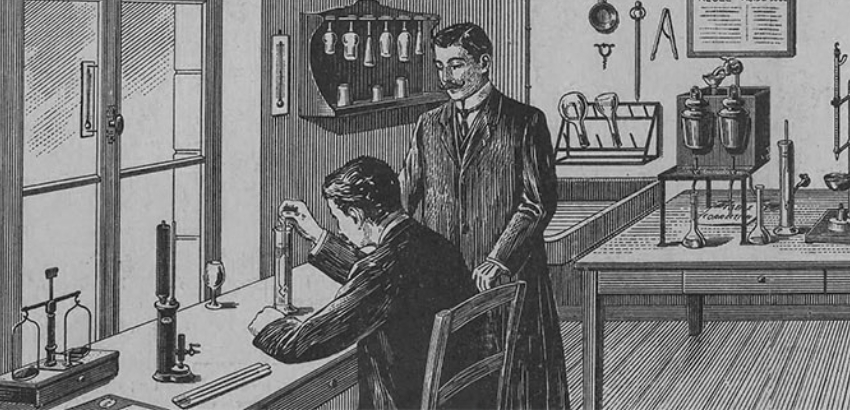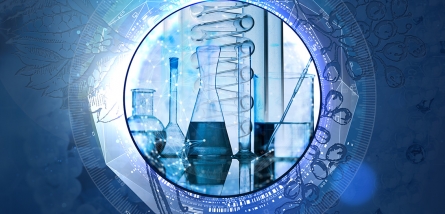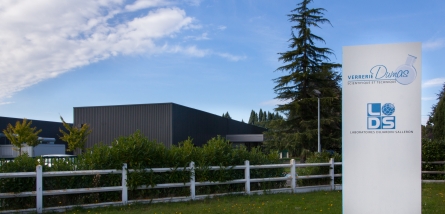
-
De l’empirisme à la science : les premiers instruments d’analyse du vin20 / 03 / 2025
Si les civilisations antiques disposaient déjà d’outils rudimentaires pour évaluer la qualité des liquides, c’est véritablement aux XVIIIᵉ et XIXᵉ siècles que les avancées scientifiques ont révolutionné l’œnologie. L’essor des instruments de mesure a permis de mieux comprendre les processus de fermentation et de maîtriser la production vinicole. Jules Salleron et Jules Dujardin ont joué un rôle essentiel en développant des instruments de précision tels que l’ébulliomètre, facilitant la détermination du degré alcoolique du vin.
Le premier pèse-liqueur est apparu à l’époque romaine, témoignant de la connaissance ancienne du vin, de la vigne et des instruments de mesure.
Toutefois, c’est au XVIIIᵉ et XIXᵉ siècles que l’évolution des connaissances sur la fabrication du vin prend une nouvelle dimension, marquant le passage d’un savoir empirique à une approche plus scientifique.
Les précurseurs des analyses œnologiques furent Baumé, Gay-Lussac, et plus tard Pasteur, qui, posent à cette période les bases théoriques de la fermentation. Antoine Baumé met ainsi au point un aréomètre permettant de mesurer la densité du moût de raisin et d’en estimer la teneur en sucre, tandis que Joseph-Louis Gay-Lussac perfectionne la mesure du degré alcoolique.
Plus tard, Louis Pasteur démontre le rôle des levures dans la fermentation, ouvrant la voie à un meilleur contrôle des micro-organismes.
Ces avancées scientifiques et techniques ont permis d’optimiser la production vinicole et de favoriser l’exportation du vin, marquant une véritable révolution dans son élaboration.
Dans leur illustre sillage, Jules Salleron se spécialise dans l’instrumentation de précision et invente l’alambic, l’acétimètre et surtout l’ébulliomètre. Rejoint par Jules Dujardin, le tandem continue d’innover pour devenir des pionniers dans le développement d'instruments d'analyse des moûts et des vins. S’inspirant des travaux de Pasteur, Jules Salleron s’intéresse particulièrement à la fermentation et à la détermination de l’alcool. Les premiers alambics de laboratoire ont été conçus à cette époque, au milieu du XIXe siècle. Ils étaient déjà utilisés par les bureaux des impôts.
L'ébulliomètre a été conçu vers 1870 par Jules Salleron, qui l'a également fabriqué et distribué. Son jeune collaborateur, Jules Dujardin a amélioré cet ébulliomètre pour lui donner la forme que nous connaissons aujourd’hui.
L'ébulliomètre est un instrument essentiel en œnologie, permettant de déterminer rapidement le titre alcoométrique volumique (TAV) des vins secs. Le principe de l'ébulliomètre repose sur la mesure du point d'ébullition du vin, qui dépend de sa teneur en alcool. À pression atmosphérique normale, l'eau bout à 100 °C et l'éthanol à 78,4 °C. Le vin, étant un mélange principalement composé d'eau et d'alcool, aura un point d'ébullition intermédiaire. Ainsi, plus la température d'ébullition d'un vin est basse, plus son degré d'alcool est élevé. Pour effectuer une mesure précise, il est nécessaire de calibrer l'appareil en fonction de la pression atmosphérique et de l'altitude, car ces facteurs influencent le point d'ébullition. La méthode est valide pour les vins secs en dessous de 20 % Vol., avec une précision d'environ ±0,1 % Vol.
En savoir plus sur l'ébulliomètre Dujardin-Salleron




